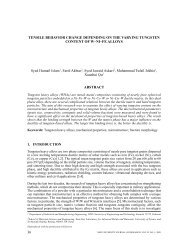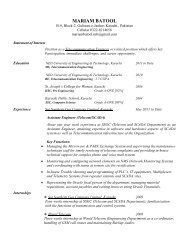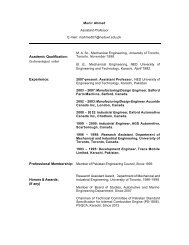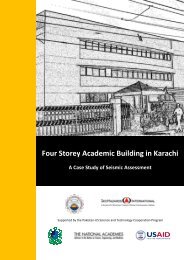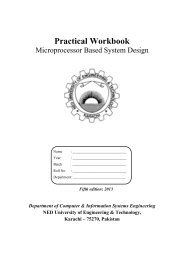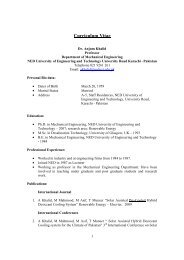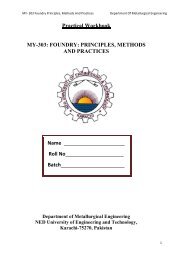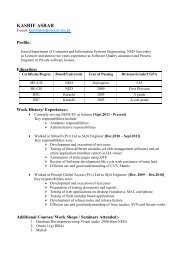MY-101 - NED University
MY-101 - NED University
MY-101 - NED University
You also want an ePaper? Increase the reach of your titles
YUMPU automatically turns print PDFs into web optimized ePapers that Google loves.
<strong>MY</strong>-<strong>101</strong> Introduction to Metallurgical EngineeringDepartment of Metallurgical Engineeringis a mixture of the cyoethite Hfe O 2 (Hydrous iron oxide) or lepidocrocite FeOCOH. Ithas a specific gravity in the range of 3.6 – 4.0, is commonly yellow or brown to nearlyblack in colour and is compact in early occurrence. It is a secondary mineral, formedcommonly by weathering and occurs in association with other iron oxides and insedimentary rocksSIDERITE (White Ores) FeCO 3It has a chemical compound of FeCO 3 (Iron Carbonate). The ore contains 48.20% of iron,37.99% of CO 2 , and 13.81% oxygen. The specific gravity is 3.83 and it’s colour variesfrom white to greenish gray and brown. It’s commonly contained variable amount of Ca,Mg, Cr, Mn. Sidrite varries from dense, fine grained and compact to crystalline. That oreare sometimes termed as spatrie iron ore or black band ore.LIMENITE (FeTiO 3 )It has a chemical compound of FeTiO 3 (iron titanium oxide) contains to 36.82% iron,31.7% titanium and 31.63% oxygen. This is commonly considered as iron titanate. It isoften associated in small amount with magnetiteProcedureIdentify the name and the properties of the sample of given iron ore by looking at itscolour and physical properties.Colour______________________________________________________PhysicalProperties_______________________________________________________________________________________________________________________________________________________________________________________________________________________Conclusion:12



